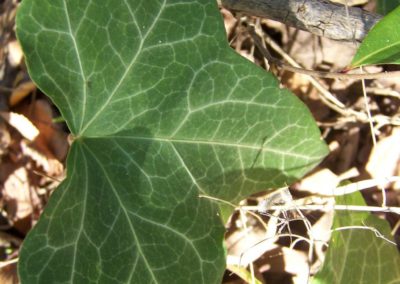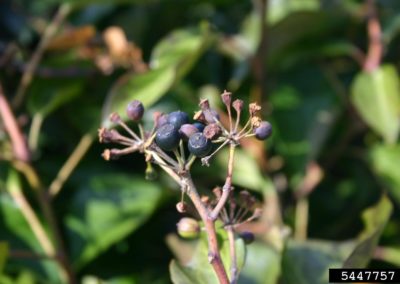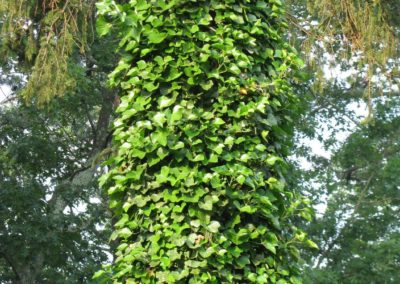English Ivy (Hedera helix)
Invasive Management Profile
English Ivy is an evergreen climbing vine that degrades wildlife habitat and biological diversity in infested areas. Due to its rapid growth and large seed dispersal range, English Ivy has become an invasive species in Indianapolis. Please do not purchase English Ivy, as it is still being sold in stores in Indiana. The leaves can also be toxic to cattle and humans if ingested.
Identification
English Ivy is an evergreen climbing vine reaching up to 30 meters in length. The leaves of English Ivy are leathery and dark green on both top and bottom. The leaves are slightly hairy and contain white veins that reach outward from the base of the leaf. They have 3 – 5 pointed protrusions. Flowers will only produce on the English Ivy high in trees in infested forests, blooming from June to October. They are greenish yellow to white in color, have five petals, and grow in clusters. English Ivy can also produce small fruits high in trees. They are dark blue to black in color.
Tools & Supplies Needed
- Shovel
- Rake
- Mattocks
- Weed wrenches
- Saws
- Loppers
- Hand clippers
- Herbicide
- Protective eyewear, gloves, and clothing
- Paper or plastic bags for disposal
Removal Methods
In areas with many native plant species, hand removal will be the best method of removal. The best time for removal of English Ivy is in fall to winter when the vine can be easily identified and plants are not seeding. Vines growing on trees will flower first, so make sure to start there.
STEP 1 : Identify plant using our identification tips and photos as well as the time of year and growth stage.
STEP 2 : Wear protective eyewear, gloves, and clothing.
STEP 3 : Use your hand to grab the bottom of the plant and pull.
STEP 4 : When pulling, make sure to remove the taproot, which is the main root system (this may be easily removed with a spade or shovel as well).
STEP 5 : Make sure to place all plant debris into a plastic or paper bag to control seed spread.
STEP 1 : Identify plant using our identification tips and photos as well as the time of year and growth stage.
STEP 2 : Wear protective eyewear, gloves and clothing.
STEP 3 : Use a saw or lopper to cut the ivy around the base of the tree. Leave the rest of the ivy on the tree.
STEP 4 : Wait for English Ivy to dry out, die, and fall off.
STEP 5 : Place all dead debris in a paper or plastic bag for landfill.
Disposal
There are many methods of disposal of the English Ivy. For smaller infestations, bagging the plant directly after pulling is recommended. For larger infestations, place a tarp under the pile to help prevent seed spread and let dry. The most important thing to remember about English Ivy removal and disposal is to inspect the area for sprouting and regrowth. If any roots or leaves are left behind the plant can come back.
Native Alternative Species
To learn more about natives and how to landscape with them here.
Vasevine (Clematis viorna)
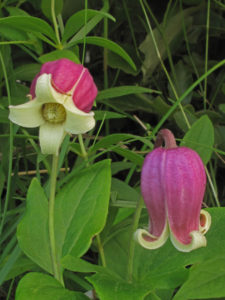
Photo Courtesy of Lady Bird Johnson Wildflower Center
Groundnut (Apios americana)
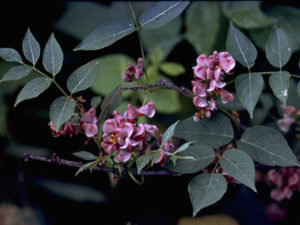
Photo Courtesy of Lady Bird Johnson Wildflower Center

